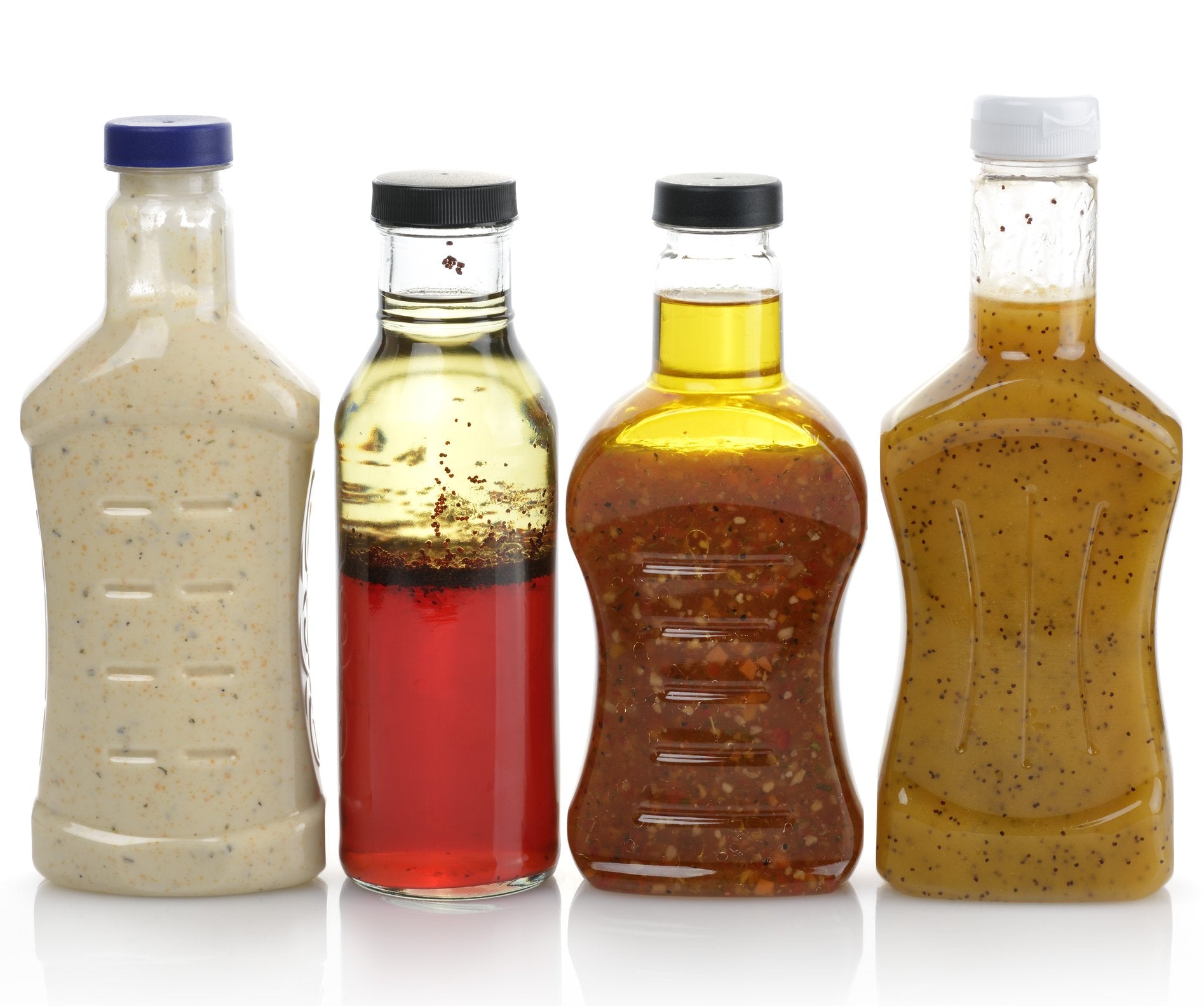10 important benefits of using emulsifiers in cooking
The Necessary Benefits of Emulsifiers for Smooth and Secure Blends
Emulsifiers are important in creating smooth and steady mixtures throughout various sectors. They reduce surface tension in between immiscible liquids, leading to enhanced texture and total sensory experiences. In food and cosmetics, their function expands beyond simple mixing; they additionally enhance service life and product stability. Recognizing the kinds and applications of emulsifiers exposes their importance in formula processes. However, the subtleties of their efficiency warrant additionally exploration.
Comprehending Emulsifiers: The Scientific Research Behind the Blend
Emulsifiers are usually neglected in daily cooking and food production, they play an important role in maintaining combinations that would otherwise separate. Emulsifiers are substances that lower surface area stress in between 2 immiscible fluids, such as oil and water. They have both hydrophilic (water-attracting) and hydrophobic (water-repelling) residential properties, allowing them to connect with both phases. This one-of-a-kind particular allows emulsifiers to develop a stable interface, protecting against the splitting up of liquids and fats.
Usual examples of emulsifiers consist of lecithin, often stemmed from eggs or soybeans, and mono- and diglycerides. These substances produce an uniform appearance in products like mayo, salad dressings, and sauces. The science behind emulsifiers depends on their capability to create a stable solution, which is essential for accomplishing desirable food top quality and life span. Comprehending the function of emulsifiers is crucial for food scientists and cooking professionals aiming for constant results.
Culinary Applications: Enhancing Flavor and Appearance
Emulsifiers substantially boost culinary applications by enhancing both flavor and texture in a selection of foodstuff (emulsifiers). They play a crucial function in producing secure emulsions, which are important for sauces, dressings, and mayonnaise. By enabling the even distribution of fats and water, emulsifiers assure that flavors are harmonious and well-blended, improving the overall taste experience
In baked goods, emulsifiers add to a better crumb structure and improved moisture retention, causing items that are soft and appealing. Additionally, they help extend service life by preventing splitting up and keeping quality.
In dairy products, emulsifiers help in creating smooth structures, essential for products like gelato and cream cheese, where mouthfeel substantially impacts consumer pleasure. On the whole, the use of emulsifiers in cooking applications not just boosts taste accounts yet additionally enhances the sensory experience of different food things, making them much more enjoyable and appealing.

Cosmetic Uses: Creating Luxurious Formulations
When creating aesthetic products, the addition of emulsifiers is essential for accomplishing smooth and luxurious structures. These agents assist in the mixing of water and oil phases, producing stable emulsions that boost product performance and individual experience. Emulsifiers not just enhance the uniformity of creams and creams yet likewise add to the overall sensory attributes, allowing for a much more pleasurable application and feel on the skin.
In addition, emulsifiers play an essential duty in the reliable shipment of energetic ingredients, making certain that they remain uniformly distributed throughout the solution. This consistent distribution improves the product's efficiency, giving targeted benefits such as hydration, anti-aging, and security. In addition, the right emulsifier can impart a desired viscosity, stopping separation and maintaining product stability in time. Eventually, emulsifiers are important in creating high-grade cosmetic formulations that meet customer expectations for high-end and performance.
Types of Emulsifiers: Synthetic vs. all-natural
Recognizing the distinctions between artificial and natural emulsifiers is crucial for formulators aiming to enhance cosmetic items. All-natural emulsifiers, originated from plant or pet sources, consist of ingredients like lecithin, beeswax, and various periodontals. They are frequently preferred for their skin-friendly properties and biodegradability. Furthermore, they can enhance the sensory account of formulations, providing a more enticing structure and really feel.
In comparison, synthetic emulsifiers are chemically engineered to develop details capabilities and stability. Typical instances consist of polysorbates and stearic acid. These emulsifiers normally provide remarkable efficiency pertaining to emulsification performance and shelf-life security. They may increase issues concerning skin sensitivity and environmental impact.
Ultimately, the choice between synthetic and natural emulsifiers depends upon the desired item characteristics, formulation goals, and consumer choices, highlighting the importance of comprehending their one-of-a-kind residential or commercial properties. emulsifiers.
The Duty of Emulsifiers in Food Preservation

Tips for Making Use Of Emulsifiers Properly in Dishes and Products
When utilizing emulsifiers in recipes and products, choosing the suitable kind is vital for attaining preferred results. Furthermore, utilizing correct blending strategies can significantly improve the stability of emulsified mixes. Understanding storage space techniques and shelf life guarantees the durability and efficiency of these emulsifiers.
Choosing the Right Emulsifier

Selecting the ideal emulsifier can substantially enhance the texture and security of a blend, as the best selection relies on the details active ingredients and preferred outcome. Numerous variables influence this decision, consisting of the sort of oils or fats, the presence of water, and the try this site target consistency. Lecithin is optimal for sauces and dressings, while xanthan periodontal works well in gluten-free baking. Furthermore, the emulsifier's compatibility with various other components plays a substantial duty in achieving the preferred security. It is important to take into consideration the temperature level range of the application, as some emulsifiers execute much better under particular conditions. Inevitably, comprehending the qualities of each emulsifier will certainly cause much more reliable formulation in products and recipes.
Proper Mixing Methods
Making use of reliable blending strategies is essential for attaining perfect emulsification in recipes and items. It is important to introduce emulsifiers gradually, permitting them to spread evenly throughout the mixture. High-shear blending techniques, such as utilizing an immersion or a mixer mixer, can boost emulsifier performance by breaking down fat globules. Maintaining a consistent temperature during blending also aids in accomplishing a stable emulsion, as fluids and fats can mix more effectively when warmed up. Furthermore, including components in the appropriate order-- starting with the liquid stage followed by the fat phase-- makes certain even distribution. Ultimately, blending need to continue till the desired uniformity is reached, avoiding over-mixing, which can bring about separation. Appropriate strategies ultimately cause smoother, more steady solutions.
Storage and Service Life
The effectiveness of emulsifiers can greatly enhance the quality of mixtures, appropriate storage space and attention to rack life are crucial for keeping their efficiency. Emulsifiers must be stored in a cool, completely dry environment, far from direct sunlight and dampness, which can degrade their homes. It is recommended to maintain them in closed containers to avoid contamination and oxidation. Furthermore, examining the expiration dates and sticking to suggested storage guidelines can optimize their effectiveness. Normal assessments of appearance and stability in mixes can show whether the emulsifier is still operating successfully. By following these storage space techniques, users can guarantee that their emulsifiers continue to be potent, causing consistently smooth and steady combinations in items and dishes.
Often Asked Concerns
Are Emulsifiers Safe for People With Dietary Restrictions?
Emulsifiers can be safe for people with dietary constraints, relying on their resource and structure. It's crucial for those with allergic reactions or specific dietary requirements to carefully evaluate active ingredient tags and talk to health care professionals.
How Do Emulsifiers Influence the Life Span of Products?
Emulsifiers enhance the service life of products by maintaining blends, avoiding separation, and minimizing wasting. Their capability to preserve harmony assists ensure durability, eventually preserving taste, texture, and overall quality in different food items.
Can I Make Emulsifiers in your home?
Yes, self-made emulsifiers can be created using natural ingredients like egg yolks, mustard, or honey. These alternatives see page can assist mix oil and water, however results may vary based on the specific dish and method made use of.
What Are Common Emulsifier Allergies to Enjoy For?
Typical emulsifier allergies consist of responses to soy lecithin, egg yolk, and dairy-based emulsifiers. Individuals with sensitivities may experience signs like hives, gastrointestinal distress, or respiratory concerns upon exposure to these active ingredients in various foodstuff.
How Do Emulsifiers Influence Nutritional Value?
Emulsifiers can influence dietary value by enhancing nutrition absorption and bioavailability - emulsifiers. Excessive use might lead to nutrient loss or discrepancy, possibly impacting health and wellness results, particularly in refined foods where they are prevalent.
Emulsifiers greatly boost cooking applications by enhancing both flavor and appearance in a variety of food products. In dairy products, emulsifiers aid in creating smooth structures, important for items like ice cream and lotion cheese, where Bonuses mouthfeel greatly impacts consumer enjoyment. In the domain of food preservation, emulsifiers play a substantial role in keeping the quality and shelf-life of different items. In items like salad dressings and sauces, emulsifiers aid to preserve appearance and flavor stability over time, making sure that the food remains attractive to consumers. Usual emulsifier allergies include responses to soy lecithin, egg yolk, and dairy-based emulsifiers.